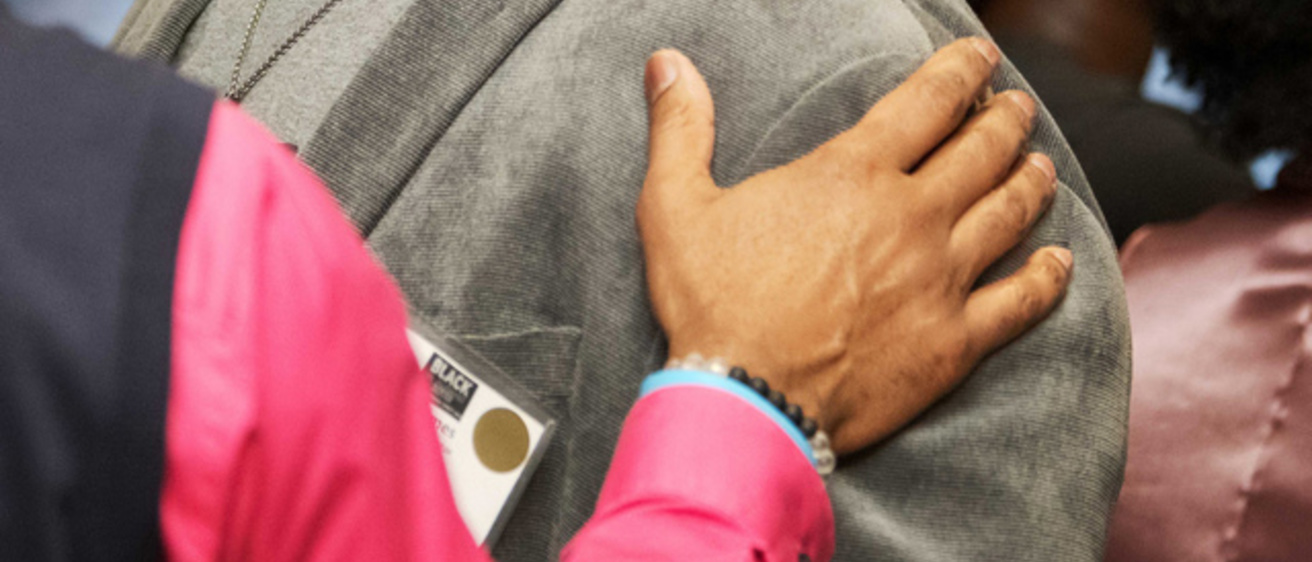Touching happens all the time in business settings. Colleagues and associates tap each other on the arm, touch their shoulders, or give pats on the back. Sometimes, if news is good, they even hug. It’s a way to get someone’s attention, offer congratulations, or persuade them.
But that was in normal circumstances. Today, in the midst of the COVID-19 pandemic where social distancing and working from home are so often the rule, touching another person is largely verboten. Andrea Luangrath, assistant professor of marketing in the University of Iowa’s Tippie College of Business, studies how touch impacts consumer behavior and says physical contact is a necessary part of our social lives. She says that the pandemic has fundamentally changed touching behavior and questions how readily people will resume these types of social touches.
It should be noted that Luangrath’s research focuses on what most people consider acceptable touch, such as a gentle tap on the arm or shoulder. It does not refer to unwelcome or threatening touching that could be interpreted as harassment or assault.
She says volumes of prior research show how people crave physical contact. Touching is vitally important in early childhood development, and for adults, it builds connections with other people and creates a sense of trust.
While some people say they don’t want to be touched, Luangrath says experiments have shown otherwise, that we are hardwired to respond favorably to contact. For instance, she says people are more likely to do what they are asked if the person making the request gently touches them on the arm. It also leads to a greater likelihood of a customer making a purchase, taking a free sample in a grocery store, or leaving bigger tips in restaurants. People even engage in greater financial risk after being touched.
Luangrath has a forthcoming study that looks at business touch from the standpoint of the toucher, whereas most research in the field looks at it from the perspective of the person being touched. The new paper finds that while people are reluctant to touch customers for fear of forced intimacy or an awkward encounter, most customers are fine with it. In one lab experiment, she says, customers in a simulated restaurant gave larger tips if the server touched them on the upper arm.
But for now, those findings are on a back burner. It’s tough to touch a customer when you’re standing six feet away.
“Prior to the pandemic, we see that people are fairly reluctant to reach out and touch another person,” Luangrath says. “In current times, people are much more aware of social distance and touch and are acutely wary of health and contagion issues. It is likely that the pandemic has heightened the anxiety and concern around the use of touch on both sides of the interaction.”
As for the future, Luangrath says that the effects of the pandemic on social interactions may be felt for some time.
“It’s an open question how social norms around touch may change as a result of the pandemic. On one hand, we may be less prone to touch, but on the other hand, there could be a resurgence since many people have been deprived of social interaction,” she says. “We’re a touch-hungry society which will persist so long as people are hesitant to engage in touch with others. This reluctance to touch may endure for some time.”
Luangrath’s study, “Should I Touch the Customer? Rethinking Interpersonal Touch Effects from the Perspective of the Touch Initiator,” will be published in a forthcoming issue of the Journal of Consumer Research.
Media contact: Tom Snee, tom-snee@uiowa.edu, 319-541-8434
